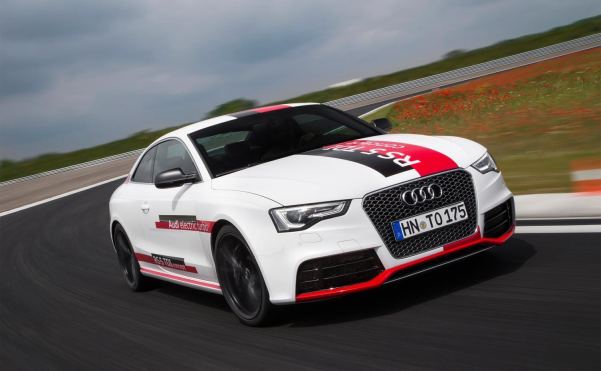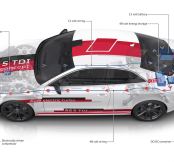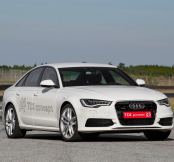More volts to create more scope in future audi models
2014-10-12 11:46:27
Audi is to upgrade part of its vehicle electrical system from 12 to 48 volts in anticipation of a raft of new technological innovations which will pave the way for even more compelling production cars.
As Professor Dr. Ulrich Hackenburg, Member of the Board of Management for Technical Development at Audi, told EcoCars4Sale.com , the move represents another technical building block for facilitating the integration of advanced new systems without jeopardising corresponding increases in engine performance and efficiency. He told us: “We are using the full bandwidth of electrification in our drive principles strategy. Running part of the vehicle system at 48 volts plays a central role in this. It enables us to make more energy available. That paves the way for new technologies with which we can make our cars more sporty, more efficient and more convenient to use.”
The 48-volt electrical systems have been recently showcased by the company in two of its concept technology demonstrators: the Audi A6 TDI concept and the RS 5 TDI concept. In common with both models is the fitment of an electrically powered compressor that operates independently of the engine load. Fundamentally, this enables it to improve the accelerative performance of the engine.
Audi say that the existing 12-volt electrical systems have been taken to their very limits. It points out that in very low temperatures, all the various static-load consumers can account for the entire power generated by the alternator – which in some instances can reach as much as three kilowatts. The company argues, therefore, that it is no longer capable of meeting the demands of new, dynamic-load consumers – such as the high-performance electric compressors.
The 48-volt solution is not designed to replace the 12-volt system, but instead to complement it as a second subsidiary electrical system. Smaller cable cross-sections are required thanks to the higher voltage meaning that in turn, lighter cable harnesses with lower power dissipation can be fitted to future models.
The higher voltage system also brings new storage solutions which deliver much higher power outputs than the 12-volt system with lead batteries, thus making it an important element of Audi’s strategy of electrifying various stages of the drivetrain. The company’s engineers and developers have already started to create a scalable platform concept that will include a version of the electrically powered compressor.
In addition, convenience systems for dynamic chassis control has also been realised by the adoption of the 48-volt technology – something which the Ingolstadt company will be keen to capitalise on over the next few months and years. Indeed, the company has indicated that it will be shortly unveiling a variety of applications in this field.
The highest development version uses a compact lithium-ion battery that supplies 48 volts as the energy source during engine-off phases. The system is integrated into the 12-volt electrical system via a DC/DC converter. Operating in conjunction with a new and efficiency optimised alternator, the lithium-ion battery qualifies the drivetrain as a mild hybrid. Audi are keen to point out that there are diverse ways of starting, controlling and deactivating the combustion engine as needed.
An energy recovery output of ten kilowatts can be achieved by the powerful alternator, far more than is possible at present. In terms of delivery, savings of up to 10g/km of CO2 can be achieved – the equivalent of around 0.4-litres of fuel per 100 kilometres.
Reported By
Andrew Merritt-Morling
Chief Editor
This is an exclusive article for EcoCars4Sale from First4Auto













